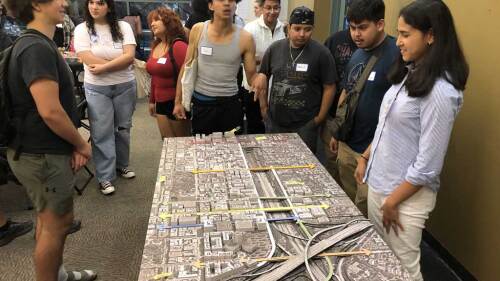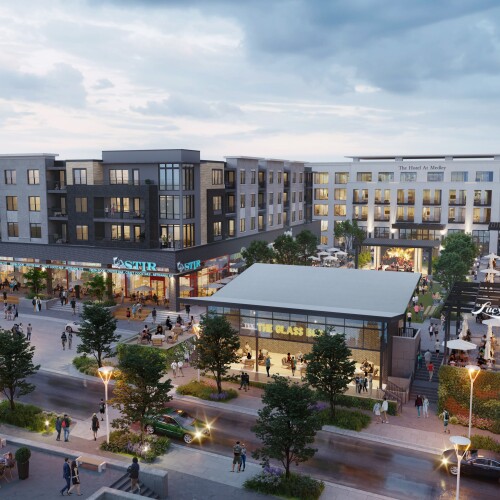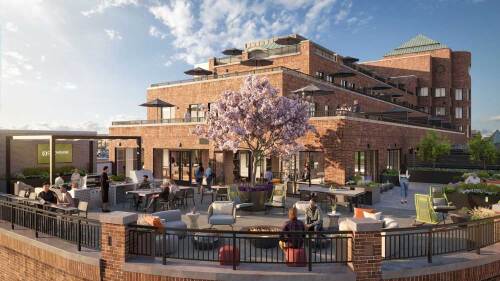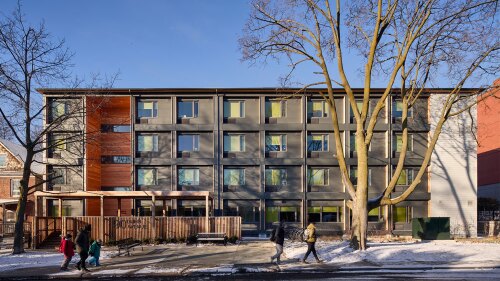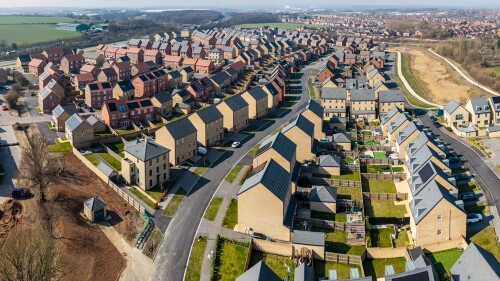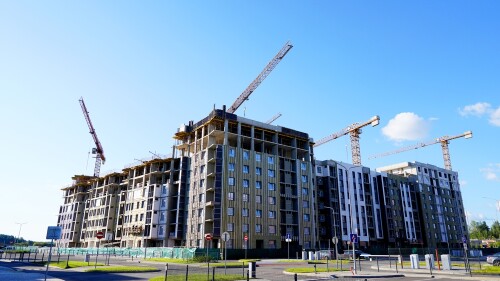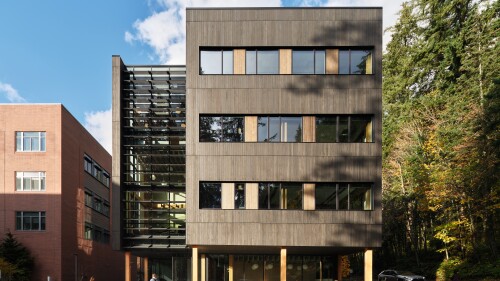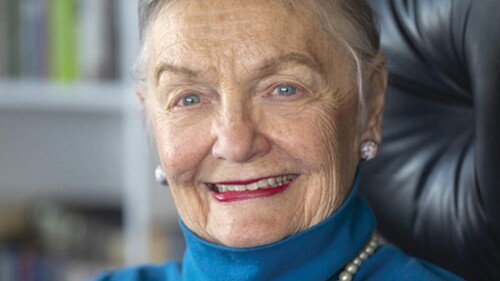Following a masterplan adopted by British Land, the AustralianSuper pension fund, and the Southwark Council, developers are now seven years into a 15-year project to transform a 53-acre (21.44 hectares) parcel of industrial land and a former quay into a community that will include as many as 3,000 new homes, office, retail, leisure, and entertainment space.
The opportunity to plan and design more than 50 acres of inner-city urban development in any city is significant, but in Pasadena, California, it is a possible inflection point in the city’s history, an opportunity to redress past mistakes, and to set the stage for future generations to benefit from perceptive and forward-thinking planning.
The Summer 2025 issue of Urban Land is now available for ULI members. This special issue is dedicated to Project Recovery in Los Angeles, with contributions from member leaders including Lew C. Horne and Claire De Briere. Also covered is the ULI Advisory Services team’s work on Panther Island in Fort Worth, Texas.
Climate Week NYC, run by the nonprofit Climate Group and held in parallel with the United Nations General Assembly, makes its annual return this September 21–28 with hundreds of in-person, hybrid, and virtual events. This jam-packed week brings together a powerful cross-section of climate leaders, including inspiring activists; visionary artists; and industry leaders in real estate, business, finance, and government.
Industry Voices
Currently, vacancy rates in the Washington, D.C. area are around 20 percent, in line with the national average. The nationwide housing shortage, meanwhile, has hit a record high of 4.7 million homes, despite a five-year uptrend in new construction. The deficit is particularly pronounced in highly desirable urban and inner-suburban locations such as Alexandria, Virginia.
Across North America, cities are confronting a housing crisis that demands urgent, innovative responses. In Toronto, the launch of the Rapid Housing Initiative (RHI) in April 2020 marked a pivotal moment—an accelerated effort at the height of the pandemic to deliver safe, stable housing. Since then, unprecedented investments have been made in communities across Ontario to address housing insecurity, reshaping the province’s residential landscape.
Although video conferencing and other technological innovation has made it possible for economic activities to be dispersed, differences in growth rates, jobs, and incomes have increased, in recent decades, as regions in the Northwest and Midwest have lost population and regions in the South and West have experienced population, employment, and income growth. The negative effects of housing price increases in growing regions serve as a constraint to domestic migration and economic opportunities, especially for lower-skilled workers. In the long run, unaffordable housing prices contribute to unequal regional development and worsening income disparities. Job-rich regions need to encourage housing production.
What trends are shaping the future of the industrial sector? Four experts from ULI’s Industrial and Office Park Development Council talk about the industrial submarkets and property types that offer the greatest opportunities, challenges developers face in bringing new projects to market, ways artificial intelligence and emerging technologies are reshaping the sector, tenant priorities, and other key trends.
Many mixed-use projects get the hardware right. They feature a thoughtful mix of uses, beautiful buildings, and name-brand tenants. Far fewer get the “software” right—the pedestrian flow, the plaza experience, the hospitality-level service, and all the subtle details that turn a mixed-use project into something more. These elements transform a development into a vibrant, urbanesque destination—one that delivers on the promise of being a true community gathering place.
Since the 1980s, the Dallas suburb of Plano has attracted some of the country’s biggest corporate headquarters and established itself as a hub for major employers. But how did Plano revamp to meet the goals of a changing economy and a changing community? The city made a pivot that has been echoed in growing cities around the country: a major shift toward investing in parks and activating green space.
Capital Markets
Despite a still tepid transaction market, commercial and multifamily mortgage loan originations increased in the second quarter—up 66 percent compared to a year ago, and up 48 percent from the first quarter of 2025, according to the Mortgage Bankers Association. But what is the outlook for access to debt and equity capital in the second half of the year? Apart from interest rates, where are the biggest pain points in the market for commercial real estate financing?
A seminar organized by the ULI Singapore NEXT Committee presented attendees with the little-known concept of real estate “tokenization,” or fractional investing/trading, as a potential bridge between private investors and direct ownership. Although not new, tokenization in real estate is a niche market, particularly in Asia Pacific, with Singapore hosting a small number of the specialized digital platforms.
U.S. President Donald J. Trump signed the nearly 900-page One Big Beautiful Bill Act into law on July 4. The budget reconciliation legislation extends numerous provisions included in the 2017 Tax Cuts and Jobs Act that directly affect commercial real estate, including reinstatement of bonus depreciation and extension of the Qualified Opportunity Zone Program. It also incorporates provisions aimed at incentivizing affordable housing, including a significant expansion of the Low-Income Housing Tax Credit (LIHTC) program. At the same time, the new law makes major cuts to wind and solar incentives.
Project Profiles
As the environmental impact of construction remains heavily scrutinized amid growing concerns around climate change and resource depletion, universities are turning to new design strategies that prioritize innovation, environmental integration, and sustainability.
In the heart of the Texas Triangle, an ambitious new vision is taking shape: Sandow Lakes, a 33,000-acre (13,355 ha) master-planned community in Milam County. The project’s first phase, known as The Switch, is already underway. Spanning 3,300 acres (1,335 ha), The Switch is an advanced manufacturing and logistics campus under development by Xebec. This supersite is poised to play a vital role in strengthening domestic supply chains by supporting the reshoring of critical manufacturing operations.
In Midtown Atlanta, the Georgia Institute of Technology Foundation is turning the 100-year-old former Biltmore hotel into a mecca for incubating technology startup ventures.
In Memoriam
Esteemed developer Tom Cousins, who was born and raised in Georgia, passed away late last month at age 93. Over the course of his extraordinary life, he became not only one of the most influential real estate and urban development visionaries of our time but also a philanthropist who vowed to create lasting change—and fulfilled that promise.
Joseph C. Canizaro, a past chair and trustee of ULI, passed away at age 88 on June 20, 2025. A member of ULI for more than 50 years, Canizaro built one of New Orleans’ most influential real estate development companies, Columbus Properties, which helped shape the city’s skyline.
Developer sought to improve people’s lives through her work.


